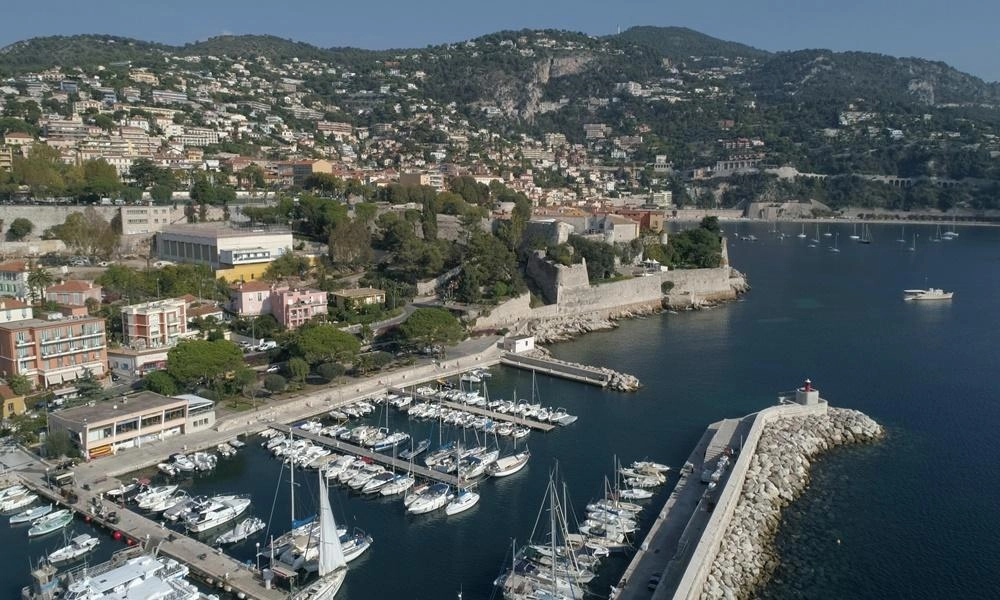
Cruise Industry Fights Back Against Large Ship Ban in Nice and Villefranche-sur-Mer
The Cruise Lines International Association (CLIA) is urging French authorities to reconsider a recent ban on large cruise ships in Nice and Villefranche-sur-Mer, set to take effect on July 1, 2025. This regulation prohibits ships carrying more than 900 passengers, citing concerns over overtourism and environmental effects.
Introduced by Nice’s mayor, Christian Estrosi, the ban is anticipated to significantly impact cruise operations in the area. Around two-thirds of the approximately 90 ship calls scheduled at Villefranche-sur-Mer in 2025 would be impacted, mostly affecting major cruise lines like Celebrity, Holland America, Norwegian Cruise Line, Oceania, and Royal Caribbean International.
CLIA opposes the ban, advocating for a more comprehensive tourism management approach that seeks a balance between economic growth and sustainability. Samuel Maubanc, the director general for CLIA in Europe, highlighted the need for long-term tourist strategies instead of prohibitive measures.
Mayor Estrosi has defended the ban as essential for controlling the negative aspects of mass tourism, arguing that large cruise ships contribute minimally to the local economy while exacerbating waste and pollution. His administration is also proposing enhanced regulations on short-term vacation rentals, indicating a shift in tourism policy aimed at greater sustainability.
The financial implications of the ban are expected to be considerable, with estimates suggesting local economic losses could exceed $10 million and broader regional losses reaching over $600 million. In light of these impacts, CLIA and 20 other maritime organizations are calling for further discussions and an economic impact assessment prior to the enforcement of the ban. They also emphasize the investments made by cruise lines in environmentally friendly vessels, which would face operational restrictions at these ports.
This decision comes on the heels of similar limitations introduced in other popular cruise destinations like Venice, Barcelona, Amsterdam, Santorini, and Mykonos. Nice and Villefranche-sur-Mer are vital ports on Mediterranean itineraries, with Nice serving as both a turnaround port and a gateway to the French Riviera. As a result, cruise lines will need to adjust their plans, especially those using larger ships. Oceania, operating four vessels that surpass the limit, is already exploring alternative ports, indicated by Frank A. Del Rio, the company’s president, who noted the wealth of options along the French and Italian Rivieras.
Speculation suggests that this restriction might boost demand for small-ship cruises. Jackie Friedman, president of Nexion Travel Group, has noted that while the overall impact is still unclear, travelers may increasingly opt for smaller vessels and book trips to alternative ports in advance.
Some small-ship operators are already making moves to benefit from this change. Ponant has launched a new week-long roundtrip itinerary from Nice, and Azamara, whose ships accommodate 700 guests, remains unaffected by the restrictions but is keeping an eye on overtourism trends to tailor their itineraries.
As the July 1 deadline approaches, ongoing dialogues between the cruise industry and local officials are anticipated, with CLIA advocating for solutions that preserve cruise tourism while tackling sustainability issues.
Set sail on a voyage of discovery with CruiseShip.net – your ultimate destination for all things cruising! Explore the latest news, insightful reviews, and thrilling cruising adventures from around the globe. Whether you’re a seasoned cruiser or a first-time traveler, CruiseShip.net is your go-to source for expert advice, insider tips, and inspiring stories to fuel your wanderlust. Embark on a journey like no other with CruiseShip.net – where every wave brings new excitement and endless possibilities on the high seas.



Leave a Reply